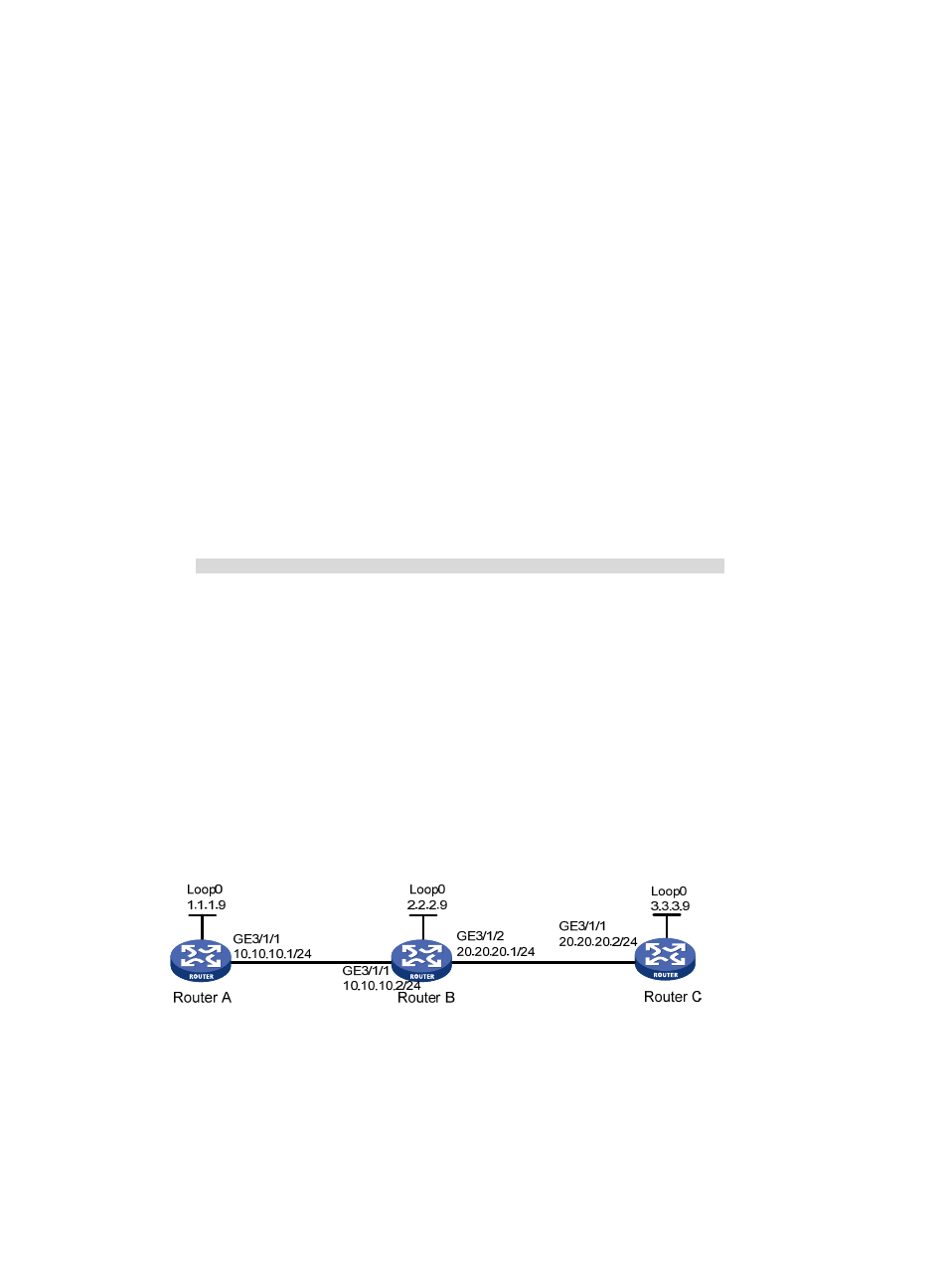Rsvp-te gr configuration example, Network requirements, Configuration procedure – H3C Technologies H3C SR8800 User Manual
Page 116

105
2 2.2.2.9 OSPF 1 0 1
10.
Create a static route for routing MPLS TE tunnel traffic
[RouterA] ip route-static 30.1.1.2 24 tunnel 1 preference 1
Perform the display ip routing-table command on Router A. The output shows a static route entry
with interface Tunnel 1 as the outgoing interface.
[RouterA] display ip routing-table
Routing Tables: Public
Destinations : 14 Routes : 14
Destination/Mask Proto Pre Cost NextHop Interface
1.1.1.9/32 Direct 0 0 127.0.0.1 InLoop0
2.2.2.9/32 OSPF 10 1 10.1.1.2 GE3/1/1
3.3.3.9/32 O_ASE 150 1 10.1.1.2 GE3/1/1
4.4.4.9/32 O_ASE 150 1 10.1.1.2 GE3/1/1
7.1.1.0/24 Direct 0 0 7.1.1.1 Tun1
7.1.1.1/32 Direct 0 0 127.0.0.1 InLoop0
10.1.1.0/24 Direct 0 0 10.1.1.1 GE3/1/1
10.1.1.1/32 Direct 0 0 127.0.0.1 InLoop0
20.1.1.0/24 O_ASE 150 1 10.1.1.2 GE3/1/1
30.1.1.0/24 Static 1 0 7.1.1.1 Tun1
127.0.0.0/8 Direct 0 0 127.0.0.1 InLoop0
127.0.0.1/32 Direct 0 0 127.0.0.1 InLoop0
RSVP-TE GR configuration example
Network requirements
Router A, Router B and Router C are running IS-IS. All of them are Level-2 routers and support RSVP hello
extension.
Use RSVP-TE to create a TE tunnel from Router A to Router C.
Router A, Router B and Router C are RSVP-TE neighbors. With GR capability, each of them can provide
GR helper support when another is GR restarting.
Figure 27 Network diagram
Configuration procedure
1.
Assign IP addresses and masks to interfaces (see
)
Details not shown
2.
Enable IS-IS to advertise host routes with LSR IDs as destinations
Details not shown
